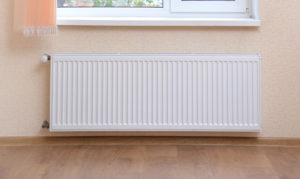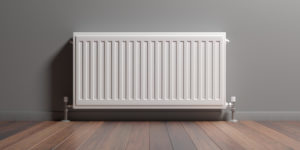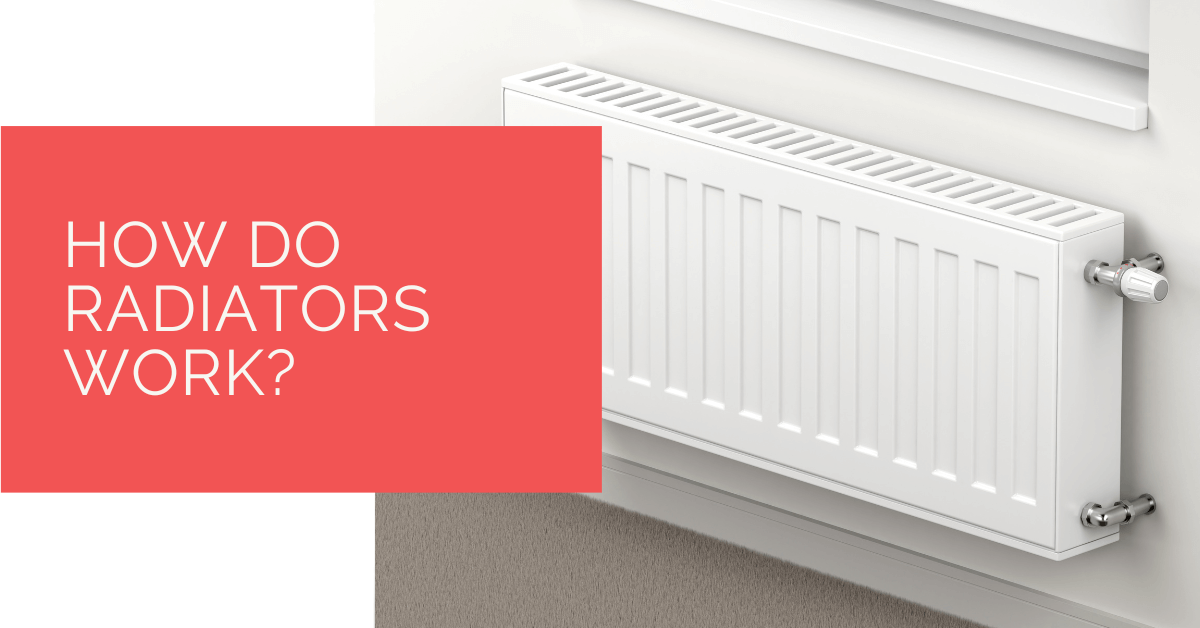Radiators are gradually becoming a must-have in every home today. This is because they help to provide heat most reliably and efficiently. Much more than that, they’re safer and require less maintenance than other heating systems available today.
However, to fully understand how effective these radiators are and how to get the best out of them, you must know how they work. Interestingly, they might look complicated on the surface, but a closer look would make you realise they aren’t as complex as they seem.
Contents
Key Takeaways
- Radiators work through a heat transfer process called convection, where hot water from a central heating system circulates through them, heating the surrounding air in a room.
- Balancing water flow into radiators is essential to maintain consistent temperatures throughout the system, achieved through a lockshield valve.
- Radiator valves, such as manual valves and Thermostatic Radiator Valves (TRVs), allow users to control heat output. TRVs are more efficient in regulating room temperatures and potentially saving on heating bills.
Understanding How Radiators Work
A heat transfer process known as convection is at the core of a radiator’s operation. This process works such that when the water in the radiator heats up, the air in the surrounding area also heats up. This hot air then travels around the room as the air circulates.
Most radiators work alongside the home’s central heating system, and this connection is established via pipes. Hot water moves into the radiators through these pipes, which in turn heats the room through convection.
Note that this hot water doesn’t stay in the radiator. Just as it flows into it, it flows back out and into another radiator in the chain. The water gets cooler as it travels through the system, and by the time it reaches the boiler, it’s completely cool. Then, the boiler reheats the water, and the process repeats itself.
Since these radiators are connected to the central heating system in a chain, the closest radiator to the boiler always carries the hottest water. In contrast, the farthest radiator holds the water at its coolest before it returns to the boiler.
Although this is how the process goes, it’s always better for all the radiators to emit the same temperature. To make this happen, there’s a process called balancing, which helps to restrict water flow into a radiator. This balancing process is done with a lockshield valve, which you can adjust to open or restrict the flow of water into radiators.

What’s a Lockshield Valve?
A lockshield valve is a kind of valve installed at the side of the radiator where water flows into it from the boiler. The primary function of this valve is to control and maintain the radiator’s heat output. Also, it allows heating engineers to adjust all the radiators in the system so that they all work at a similar temperature (balancing process).
Once all adjustments have been made through the balancing process, the valve is locked in place with a plastic cap so that no further adjustment can be made unless necessary. You might only need to interact with the lockshield valve when there’s a problem or you need to adjust the water flow again.
These valves control the minimum and maximum amount of water that can pass through a radiator. Note that the slower water moves through the radiator, the more heat it supplies to the surrounding area.
Style Radiator Valves
Besides the lockshield valve, there’s another valve located at the other end of the radiator. And unlike the former, which doesn’t have to be adjusted all the time, this valve needs to be controlled by the owner to determine the radiator’s heat output.
There are two different types of this valve: Manual valves and Thermostatic Radiator Valves (TRVs).
Manual Valves
These are simple and, as the name implies, manual tools that you can use to get the desired setting. Still, you should note that since you’re adjusting the valve to get the best heat output by yourself, you’d be playing a lot of guessing games.
Manual valves are also simple and budget-friendly.
Thermostatic Radiator Valves (TRVs)
Unlike manual valves, Thermostatic Radiator Valves are tools that detect the radiator’s temperature and automatically adjust the room’s temperature accordingly. That means that the TRV regulates the heat output of the radiator.
Although TRVs are also pocket-friendly, they still cost more than manual valves. But when you consider just how efficient they are in controlling heat output, you’d realise that it’s a worthy investment.
In fact, because TRVs alter the hotness of radiators in each room where they’re installed, they can help you save money on heating bills.

Radiator Heat Output
Before choosing a radiator, one of the things that you should consider is its heat output. A radiator’s heat output is measured in British Thermal Units (BTUs). This is the “amount of energy required to raise one pound of water by one degree Fahrenheit.”
We agree that this might be a lot of information, especially for the layperson, which is why you can always calculate the heat output your home needs using a BTU calculator on the internet.
You only need to supply some basic information; the calculator will let you know how much BTU you need in a room. With this information, you can go ahead to choose a radiator that fits the bill.
Extra Tip on Using Your Radiator
People who have their radiators installed on an exterior wall in their homes might notice that they’re losing some of the radiator’s heat. This is especially true if the wall has drafty doors, windows nearby, or poor insulation.
Putting homemade insulation behind the radiator is an easy solution to this problem. You can do this with a sheet of foam that contains aluminium on one end; this is something you can make by yourself or buy in a hardware store.
Once you have this sheet, place it between the heating unit and the wall — allow the aluminium to face the heater. Doing this will trap the heat and redirect it back to your living space. And the best part is that you don’t have to spend so much to do this; meanwhile, you’d be saving yourself some extra cost on energy bills.
Heat Pump Source: Reliable Heating and Cooling Solutions
At Heat Pump Source, we take pride in our unwavering commitment to serving the UK with top-tier HVAC solutions. From the efficiency of heat pumps and the cool relief of air conditioning to the warmth of boilers, radiators, and underfloor heating, our dedicated team is always at the forefront of innovation. We understand the unique needs of every household and business, and we strive to provide dependable health and cooling products and services that are tailored just for you. Ensuring your comfort and satisfaction is our utmost priority. Whether you have questions, need guidance, or require support, we’re always here to assist. Please don’t hesitate to contact us; we’re eager to be of service.
Conclusion
A radiator is an old heating system that’s never going out of style anytime soon. In fact, manufacturers will keep finding ways to ensure that this tool serves us better. And based on the details already provided, we can see just how much radiators work to ensure that we stay warm on cold days.
Finally, since there are different types of radiators out there in terms of materials, colours, designs, and fuel sources, you’ll always find one that fits well into your living space. So long as you know what BTU you need, then you’re good to go.
About the Author
At Heat Pump Source, our articles are the product of a collaborative effort among a team of highly skilled HVAC experts. Our dedicated professionals, hailing from diverse backgrounds in heating, ventilation, air conditioning, and refrigeration, contribute their extensive knowledge and experience to every piece of content. This multidisciplinary approach ensures comprehensive coverage. Our commitment is to deliver authoritative, reliable, and tailored advice to meet the unique needs of every household and business across the UK.

